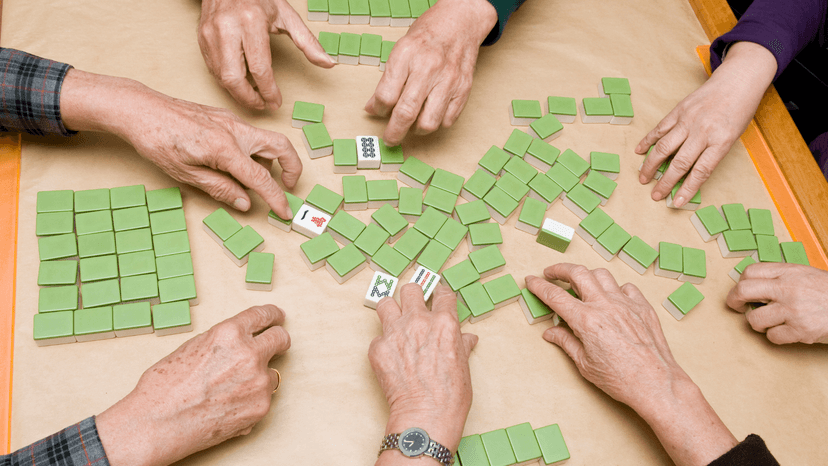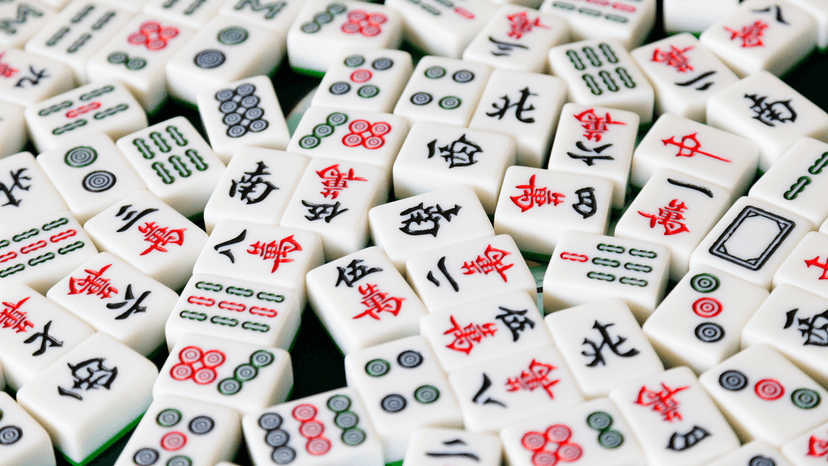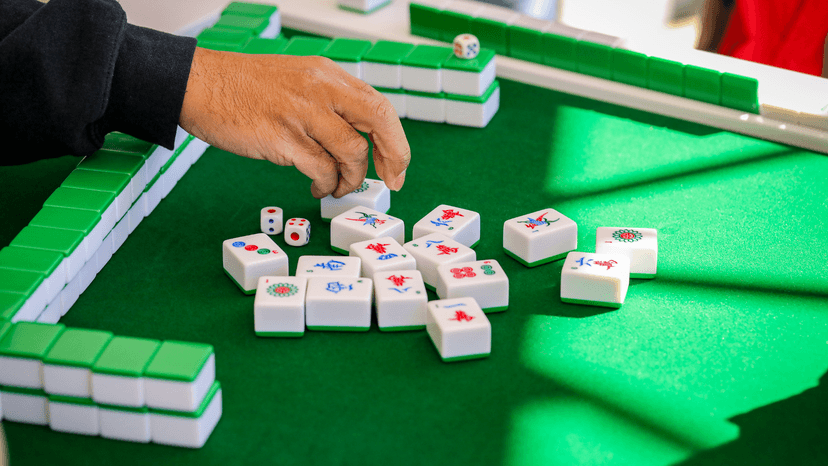Mahjong Tiles - All to Know

Mahjong is one of the most played games in online casinos, and it is a unique one. But what makes Mahjong this interesting? The answer is simple. With Mahjong Tiles, it's more fascinating to play.
Many players still aren’t aware of Mahjong Tiles. For them, we are drafting this guide, so they don’t have to worry about that anymore. We will discuss everything we know related to Mahjong Tiles. So, let us get started right away without any further delay.
Total Tiles In Mahjong
Tiles in Mahjong games typically vary from one location to another. Although sets from the United States or Southeast Asia may have extra tiles in the form of flowers or Jokers, in general, they have at least 136 tiles, most often 144. Some sets also include blank tiles that owners may use to replace those that are broken or missing.
Categories of Mahjong Tiles
There are six different categories of Mahjong tiles: Suited Tiles, Red Tiles, Honor Tiles, Flower Tiles, Animal Tiles, and Joker Tiles.
Suited Tiles
Suited tiles are also known as number tiles, and they have a suit and a rank. With rankings ranging from one to nine, there are three suites focused on money. Each rank and suit combination has four tiles, for a total of 108 suited tiles (36 tiles per suit). A fitted tile is referred to by its rank, then its suit. The terminal tiles are collectively referred to as the ones and nines of each suit. A meld can be created with suited tiles.
- Circles: A collection of circles serves as the symbol for the circle suit. The circles in this suit's monetary origin symbolize the copper coins known as Cash in English.
- Bamboo: Apart from the 1 Bamboo, which is typically represented by a bird, the bamboo suit is shown as outlines of sticks. The 1 Bamboo is sometimes known as the sparrow in Japan, even though it most frequently portrays a peacock. Early sets just had a single bent string of money with a crimson knot at the end instead of a bird.
- Characters: Chinese characters are used to symbolize the character's suit.
Red Tiles
The Japanese set is the only one with red tiles. They don't have four duplicates and appear as red versions of the tiles from each suit. The Red 5 tiles for the other suits followed the Red 5 Circle, which made its debut in the 1970s. Red 1s and 9s later made an appearance, though they are far less frequently encountered in sets than Red 5s. Red 3s and 7s emerged after them. If certain criteria are satisfied, a rare red-white dragon can also be used as a wild card.
- These tiles can be excluded voluntarily.
- One duplicate of its ordinary, non-red counterpart is taken out of play when it is entered.
- When combined, they raise the score.
- As flower tiles aren't frequently utilized in Japanese Mahjong, these sets usually exclude the Four Gentleman flower tiles to create a place for the red tiles.
Honor Tiles
Honor tiles are created into melds, much like fitted tiles. However, they lack rank and suit. They are furthermore divided into two categories. The two categories are the following:
Winds
There are four Wind Tiles:
- East
- West
- North
- South
Dragons
There are three types of Dragon Tiles:
- Red: The traditional Chinese character for center or middle is written on a red tile. In sets intended for English speakers, the initial letter of the Wade-Giles may alternatively be represented by a black letter C in a tile corner. These tiles were absent from one of the earlier sets. Red Dragon, a classic Chinese character, may be seen on several tiles.
- Green: Even in sets where the Character tiles are printed in simplified Chinese, green is a tile with a traditional Chinese green character. Other sets, most notably American, substitute a green dragon for the character or an F in black in the tile's corner to indicate the initial letter of the translation. In the first sets, this tile wasn't present. The classic Chinese character Green Dragon may be seen on several tiles.
- White: Although most contemporary sets use tiles with a blue border like White Dragon to differentiate them from replacement tiles, white is a tile that can be without any marks, like White Dragon. A black letter B could also be included in the tile's center in English sets. These unmarked Japanese tiles are sometimes referred to as "tofu" in some Japanese mahjong groups.
Flower Tiles
In mahjong melds, Flower tiles are not utilized. These are put aside after being drawn, and the player then gets to draw again, but from a dead wall. These tiles frequently include stylized images of flowers in a variety of shades. Yet, there are also additional, non-floral motifs that differ from set to set.
Quarters
If a set has flower tiles, it often has two quartets of them, each with a different label's color and design. In ordinary Chinese sets, one quartet will have blue Arabic numbers, and the other group will have red Chinese numerals. Each quartet has four separate tiles that are each numbered from 1 to 4 or clearly labelled.
- Seats are assigned to numbers such as 1 = East, 2 = South, 3 = West, and 4 = North.
- If the number on the flowers equals the seat number, the winner's score is doubled.
- However, there are advantages to gathering a whole quartet, and in certain versions, gathering all the flowers results in a win right away.
- Several games do not include them or view them as optional, since they provide points for purely random events.
Animal Tiles
The player's seat is immediately matched by the animal tile, which is unnumbered flowers. These tiles are typically found in pairs and feature classic Chinese stories as their topics. If two tiles in a pair or all of the animals are gathered, payment is made right away. Thai and Malaysian sets for four players include four pairs of animal tiles, compared to two pairs in Singaporean sets.
Some of them are the following:
- Cat and Mouse
- Rooster and Centipede
- Caishen and Sycee
- Jiang Ziya and Fish
- Liu Haichan and Jin Chan
- Dragon and Flaming pearl
Joker Tiles
Subject to regional limitations, joker tiles can be used to substitute any suited or honor tile while assembling a hand. Certain variations of Southeast Asian and Chinese mahjong, particularly Shanghainese mahjong, occasionally include four jokers. Also, there are eight jokers in American Mahjong.
Common Unique Jokers:
- Circle joker
- Character joker
- Universal joker
- Red jokers
- Suit joker
- Dragon joker
- Wind joker
- Flower joker
- Honor joker
Rank Restricted Jokers:
- Terminal Joker: Replaces one or nine of any suit.
- 147 Joker: Replaces one, four, or seven of any suit.
- 258 Joker: Replaces two, five, or eight of any suit.
- 369 Joker: Replaces three, six, or nine of any suit.
Conclusion
Remembering everything can be a little confusing, but players can just start with the Mahjong Tiles meaning and then move forward. After reading, the players will be able to somewhat understand Mahjong Tiles as they will only be able to understand it fully when they are playing the actual game at top online casinos.
There are six different types of Mahjong Tiles, and all of them are interesting to know about. They have sub-categories, too, so it’s better to learn about them slowly.
FAQ
How many tiles are in a mahjong set?
A set of 144 Mahjong tiles includes 36 tiles in the Circle suit. 36 tiles in the Bamboo suit, 36 tiles in the Character suit, 16 wind tiles, 12 dragon tiles, and 8 bonus tiles (4 Flowers and 4 Seasons).
How to play mahjong tiles?
Making matching sets and pairs is the aim of mahjong. A pair is two of the same tiles, whereas a set is three or four identical tiles or three consecutive tiles. Mahjong players must create four sets and one pair in order to win.
How many mahjong tiles do you start with?
The tiles are all dealt face down, and the dealer is given 14, while the other players are given 13.
What is Soap in mahjong?
The Soap tile is the white dragon there on the left. When putting together certain hands, soaps can be utilized as zeroes.
What is Chi in mahjong?
There are different calls for when the discarded tile will complete a triplet or a sequence. When the player to the left discards a tile that will make a sequence with two of the tiles in the player’s hand, they can proclaim Chi, the opening call of the game.







